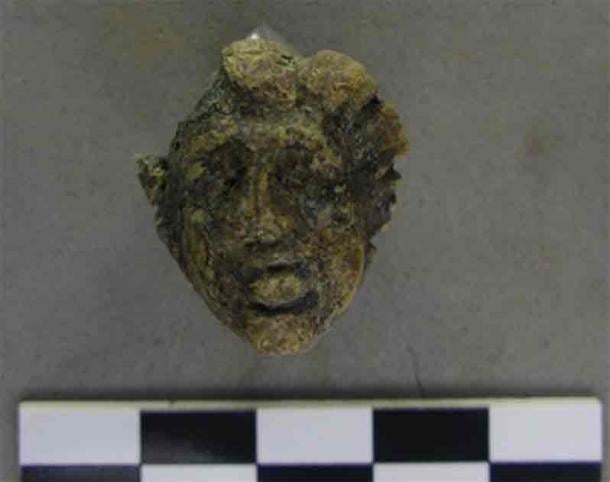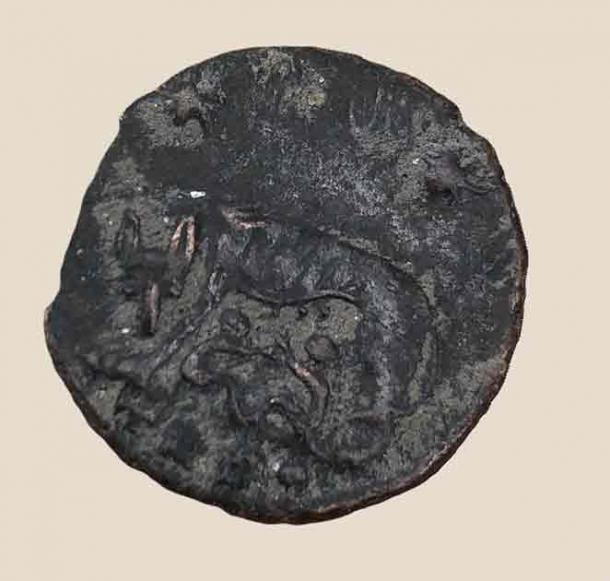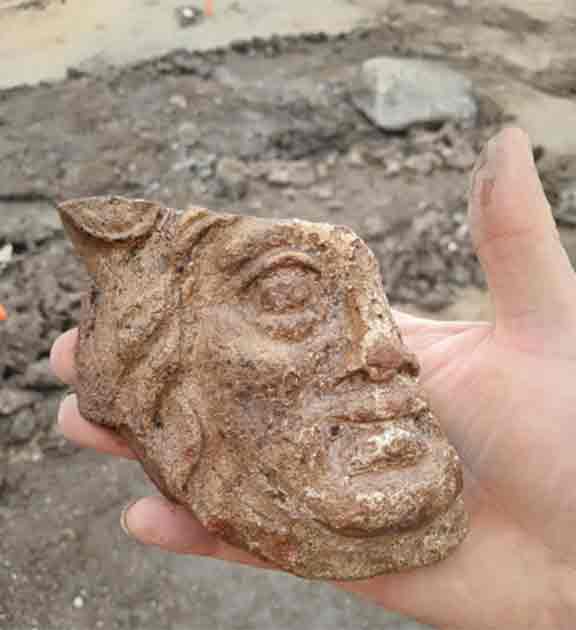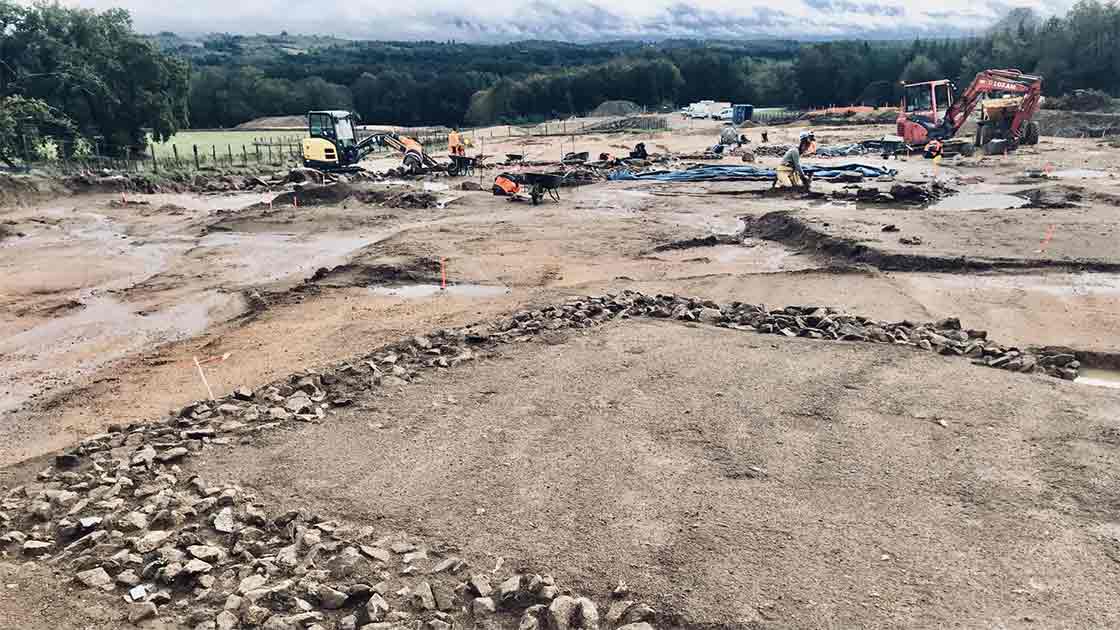Roman Ruins and Evidence of Neolithic Settlement Unearthed from France
Archaeologists in France have recently uncovered a fascinating site offering a glimpse into multiple layers of history. Nestled near the village of Chamborêt, approximately 12 miles (19.3 km) north of Limoges, they have found remnants of both Roman and a Neolithic site dating back 4,500 to 6,000 years, over which the Roman site built itself, 1,700 years ago. The most striking discovery is the remains of a Roman-era landscaped pool and surrounding wall encircling a natural freshwater spring!
- 6 Ways Roman Engineers Were Way Ahead of Their Time
- Remarkable Horseshoe Shaped Prehistoric Structure Discovered in France
Ancient Roman Engineering, Neolithic Occupation Combined
Dating back to the third century, these Late Empire relics are an insight into ancient Roman engineering and leisure activities. Among the ruins lies a particularly amazing artifact: a ceramic face believed to represent a deity or perhaps even the mythological figure of Medusa, strategically positioned near the spring, hinting at ritualistic significance, according to a press release by INRAP.
- Did a Sultan Find Medusa’s Sarcophagus in the Basilica Cistern?
- The Remains of a Circular Iron Age Village Revealed in France

Bronze head found among the Roman ruins at Chamboret linked to the late occupation of the site. (Inrap)
What has truly captivated archaeologists is the possibility that this Roman construction sits atop the remnants of a far older, possibly sacred site dating back to the Neolithic period. Evidence supporting this hypothesis includes ceramic shards, coins from the late Roman Empire, and fragments of flint, including a piece of a dagger, likely offerings made during Neolithic times.

The back of a Roman coin from the IV century representing Romulus and Remus with the she-wolf. (Inrap)
Further excavations have revealed traces of ancient structures, including the faint outlines of a dry-stone building with a rectangular layout, along with postholes and sandpits suggesting the presence of additional wooden structures. While the exact age of these structures remains undetermined, the artifacts found within them hint at an early settlement, possibly serving as both a residence and a farm.
"These installations shed light in an unusual way on the occupation in Late Antiquity," write the authors in the statement. "This type of rural site undoubtedly illustrates a stage in the gradual transition to the … early Middle Ages."
Following its abandonment for many centuries, the site experienced a resurgence in the third century AD, during the Roman occupation of the region. Archaeologists have uncovered numerous fragments of bricks and tiles from this period, some displaying signs of intense heat, suggesting the presence of sustained fires in the vicinity.
A Freshwater Spring, A Medusa-Like Visage
The freshwater spring, still active today, underwent a transformation during this Roman revival. It appears that the spring's source was enclosed within a wooden box buried in a pit filled with flat stones. This innovative infrastructure facilitated the creation of a landscaped pool or basin, encircled by an arc or wall constructed from granite blocks, reports Live Science.

The freshwater spring, dating back approximately 4,500 to 6,000 years was found below the remains of a Roman-era pool. (Inrap)
“In addition to the many samples taken, which will provide information on the paleo environment, ceramic shards and coins of the lower Empire have been unearthed. An important fragment representing the face of a divinity or Medusa was discovered in the final filling of the capture of this point of water. This diversity of furniture supports the hypothesis of a monumentalization of the site from the third century,” they write.
Among these late Roman-era constructions lie fragments of ceramics dating from the third and fourth centuries, including a notable ceramic fragment depicting a divine or Medusa-like visage, a motif believed to possess apotropaic qualities against malevolent forces. Positioned above the spring-fed basin, this ceramic face likely represented a water deity, symbolizing the site's spiritual significance.

Ceramic piece representing a Medusa-like face of a deity. (Inrap)
While the Roman-era ruins now dominate the landscape around the Chamborêt spring, evidence suggests that it held significance in much earlier epochs. Archaeologists uncovered several flint pieces, including a fragment of a "Grand Pressigny" dagger, named after the renowned archaeological site in central France, known for its Neolithic long blades. The additional presence of a pit near the spring, likely of Neolithic origin, corroborates this further.
“These installations illuminate in an unusual way the’ occupation of the’Later antiquity in this sector of the Lemovice territory. The’organization and management of the campaigns in Roman Gaul evolves from IIIe century. This type of rural site probably illustrates a step in the gradual transition to the occupations of the High Middle Ages,” conclude the authors.
Top image: Initial stage dry stone structure of Roman ruins found at Chamboret, France. Source: Inrap
By Sahir Pandey
References
Johnson, R. 2024. Roman ruins in France discovered on top of Neolithic structures. Available at: https://www.newsnationnow.com/science/france-roman-ruins-found-atop-neolithic-ruins/.
Metcalfe, T. 2024. 1,700-year-old Roman ruins discovered atop much older Neolithic sacred spring. Available at: https://www.livescience.com/archaeology/romans/1700-year-old-roman-ruins-discovered-atop-much-older-neolithic-sacred-spring.
















